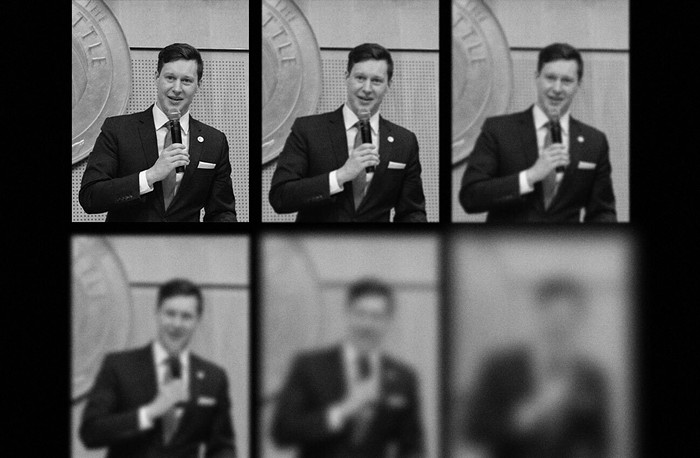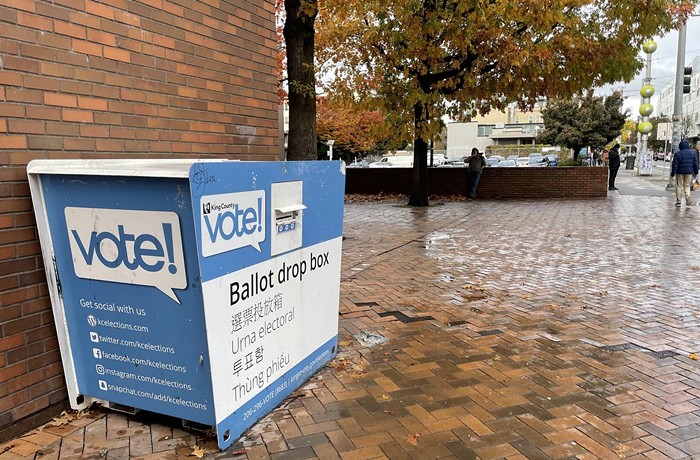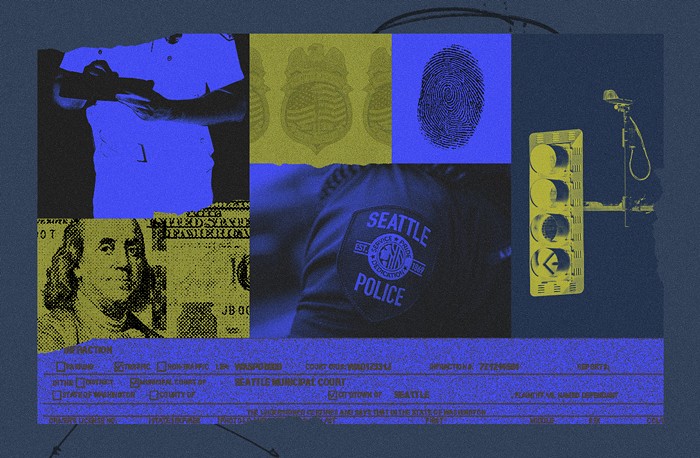For the past year, he and other light rail dissidents at Save Our Valley have been criticizing anyone who would not swear total devotion to a tunnel plan for Rainier Valley. In Curtis' eyes, anyone, like Davies, who lives in the Valley and accepts the current light rail proposal from Sound Transit, must be a traitor.
But this time Curtis was attacking Davies personally, and on a host of issues. Armed with accusations, he fills reporters' ears with questions about Davies and her group, the Rainier Valley Transit Advisory Council (RVTAC). Plagued by nepotism and funding conflicts of interest, RVTAC is nothing more than a shill for Sound Transit, Curtis tells the media.
Davies' response was immediate. "When do you want to meet today?" she said. She'd make the time. She'd answer questions all day long if she had to.
A major battle in Rainier Valley over Sound Transit's multi-billion dollar transit proposal is heating up, and Save Our Valley and RVTAC are at the center. The two groups are pressing their case to anyone who will listen, and both groups claim to have the sacred Will of the People in mind.
The policy issue boils down to this: Should Sound Transit redesign its light rail proposal so Rainier Valley gets a tunnel line (like other parts of town), instead of the street-level plan that's currently in the works?
Save Our Valley claims the Valley would suffer if it did not get a tunnel. Not only would 90 businesses and residents be taken through eminent domain, a transit line placed along Martin Luther King Way would irreparably divide the community in half by blocking most intersecting side streets.
"This project would destroy all the economic development that we've built for the last 20 years," says Curtis, a 51-year-old carpenter. Because Rainier Valley is one of the least affluent parts of town, and because it is so racially diverse, Sound Transit's policies are discriminatory, Curtis claims.
RVTAC, on the other hand, wants Sound Transit to put in light rail, tunnel or no tunnel. When Davies sits down to argue her group's case, she uses two statistics for support: 1) 20 percent of residents in the Valley do not have access to a car; 2) the tunnel that Save Our Valley wants would cost an additional $400-$600 million.
Davies fears her community could lose its stake in regional transit if Save Our Valley pushes too hard. "I think, at this point, the tunnel option is dead," she says. "I think all they can achieve is tunnel or nothing. They may ensure that there will not be anything," she says.
Moreover, Davies, who is white, accuses Curtis, who is white, of racism for his pro-tunnel stance. "There is nothing more prejudiced and racist than not serving minority communities with transit. Period."
Both sides are claiming legitimacy, but both sides have also been criticized recently for not adequately supporting the diverse views of Rainier Valley -- an area that is roughly one-third white, one-third black, and one-third Asian.
Some observers privately say that Save Our Valley's support has fallen off greatly in recent months. Curtis insists the contrary. About 50 people of all backgrounds showed up for the last regular board meeting, he says. "We still have a wide base."
Still, critics say, some residents in Rainier Valley may be exercising more financial influence over Curtis' group than others. "There was some grassroots fundraising, and it was pretty effective, but the bulk of the money came from the more established interests [in Rainier Valley]," says Blair Butterworth, a political consultant who advised the group in its beginning months. As opposed to those folks in Rainier Valley who don't have cars, those "more established interests" include the more profitable businesses whose properties would directly be affected by the rail line.
Whatever its base, Save Our Valley has shown no end of energy in the fight against a street-level train. Last month, it played the race card, filing a civil rights complaint regarding the current rail plan. In addition, an offshoot of the group is gathering the 18,000 signatures necessary to put the issue before all Seattle voters during the 2000 election. The organization is also preparing to file a lawsuit against Sound Transit by January.
Satisfied with his group's legitimacy, Curtis gleefully attacks Davies and RVTAC, his local opponent. "Where are the minority organizations [in RVTAC]?" he asks. Davies' group is made up of 21 organizations, from the local chamber of commerce to the Refugee Women's Alliance. There is only one racial or ethnic minority group among RVTAC's membership, the Filipino Community of Seattle. No African American organizations and no other Asian groups are involved with RVTAC. "We have not made any efforts to recruit any organizations to join," acknowledges Davies. She won't admit this hurts the group's credibility.
There are also questions about RVTAC's funding. One hundred percent of its $57,200, 18-month budget comes from Sound Transit.
Davies' response: "If George Curtis really feels that 21 neighborhood associations have been bought out" -- she throws up her arms -- "that's his opinion. But it's so unlikely as to be impossible."
Curtis also wants to know how Davies got her job. Her husband used to be the local president of the chamber of commerce, which helped launch RVTAC. Davies, a 42-year-old horticulturist, insists that an independent steering committee hired her, not her husband.
Nobody can say for sure who will win this battle until Sound Transit has finished laying its railroad tracks, which is years away. Still, if media attention is an early indicator of success, Save Our Valley is winning big. A database search of the groups' names shows that Save Our Valley has been mentioned 49 times since things heated up last October. RVTAC has only been mentioned five times.
Davies cedes the first round to Curtis. "Save Our Valley has run a very press-savvy campaign from the beginning," she says. "That has not been the strategy of RVTAC."
Not anymore, she vows.


















